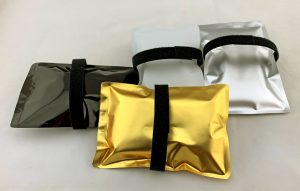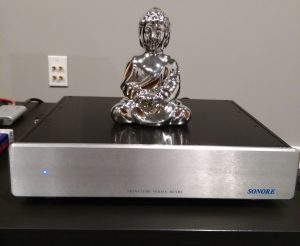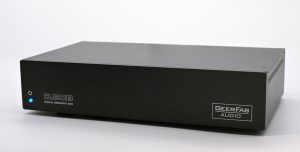Nordost is a company that was set up in 1991 by Joe Reynolds. It specializes in manufacturing audio cables. Apart from cables, the company also offers products from the QRT series used to supply power to devices and eliminate RF, as well as electromagnetic interference.
"A power supply seems to be one of the most important elements of a whole audio system." Does this sound controversial? Not anymore. Anyone I talk to nowadays, I mean all the people that I respect for their knowledge and experience, emphasizes that the elements that "set" the sound of a system are: the power supply (the power cord, power strip, etc.), room acoustics and the signal source (in this very order).
It might seem that this means turning things upside down and looking for faults where they do not exist. However, it is actually a logical outcome of an idea propagated in the early 70s by the LINN company, which could be summarized in two words: "SOURCE-FIRST!" The PSU, including the power cord and the preceding power strip, and even the wall socket and fuses in a distribution box are found at the very beginning of an audio signal path.
Nordost QRT Audio Enhancers
However, before we move on to the topic of this test, i.e. the Nordost QSOURCE linear power supply, let us focus on what we are actually talking about. The power supply belongs to a group of products called the Quantum Resonant Technology, or QRT for short by Americans. These products are to eliminate or correct RFI and EMF distortion that has an effect on audio devices. Some of it is connected with power supply and some affects the devices themselves. Each of these products uses a slightly different technology that was applied in the medical and military industries in the past.
The article that you are reading is the third one in a series describing how these products work and influence the sound of our reference High Fidelity system. First, we looked at a device called the QPoint, referred to as the "Resonance Synchronizer" by its manufacturer (HF № 184 HERE). I used it then under a SACD player and, as a result of that experiment, a plan to thoroughly examine this phenomenon originated in my head.
The test I am talking about started with a listening session, with me and Alex Brady as the participants. Alex is responsible for training sales people and for all European exhibitions at the Nordost company. He brought products that are intended to form a QRT SYSTEM to our second meeting, i.e.:
- Resonance Synchronizer QPoint (x6) – price: 3,390 PLN/unit,
- Linear Power Supply QSOURCE – price: 11,129 PLN,
- DC Cables QSource (to supply power to QPoints) – price: 1599 PLN/unit,
- Ground Unit QKore6 – price: 11,129 PLN,
- Ground Wires QLine – price: 1,399 PLN/unit,
- AC Distribution QBase8 Mark II (+ a power chord) – price: 8,549 PLN.
In the second article devoted to this system, I tested four QPoint devices with the dedicated PSUs—small impulse wall power supply units (HF № 190 February 2020 HERE A visit at… High Fidelity Alex Brady & Nordost QPOINT x 4). The next natural step is to replace the impulse power supply units with the dedicated QSOURCE line power supply.
QSOURCE + DC CABLE
The QSOURCE is a stabilized constant voltage line power supply. Its cabinet resembles the one that we know from the Nordost AC Distribution QBase8 Mark II power strip—it is a large block of aluminum with some space milled out for the components. The power supply is excellently made and surprisingly heavy. It is powered, just like the power strip, using a cable with an IEC plug located next to a gold-plated WBT speaker terminal. The latter is used for grounding the device using the QKore6 ground unit. We will describe it in article no.
There are three terminals on the upper panel, in the company's own LEMO format—it is one of the best solutions of this type. There are six of them, hence the digit in the product name. The device uses, as we can read on the company website, "a transformer with a unique circuit design to convert AC to DC power while an internal QRT module removes electrical anomalies and noise artifacts from the line and smooths out the DC output" (date of access: 11.03.2020).
In order to connect the power supply to the "resonance synchronizers," we use the QSource DC Cable. I think you already know what I am going to say now: this is one of the best cables of this type that I know of. However, it is probably normal—we are talking about a specialist and one of the leading manufacturers in the field of cables here. The cable has LEMO connectors on both ends and a few length options are available—the cables used in the test were 2 m long each.
The cable is quite rigid—it consists of two screened solid-core conductors made of silver-plated Micro Mono-Filament OFC copper, i.e. copper with Fluorinated Ethylene Propylene (FEP) dielectric wound around the wires in a way that allows to minimize their contact with the outer sheath. Although it might seem they do not affect sound, they actually have influence on it—the Nordost company has recently introduced their upgraded "Premium" version using wires with a larger diameter. Here we are testing the basic version.
Finally, a few more words about the power supply itself. It includes a surprise element that I am going to use, too (in a separate article). Four of the above mentioned outputs offer 5 V DC and they are designated for QPoints. The next two are used to power other devices in a system, such as routers, D/A converters, etc. We can use switches underneath to change their output voltage in three steps: 9/19/12 V DC (output 'A') and 19/24/12 V DC (output 'B').
THE WAY WE LISTENED
The listening sessions consisted in switching the power supply of four QPoints between standard impulse power supply units and the QSOURCE. It was an A/B/A and B/A/B comparison, where A = impulse power supply units, while B = the QSOURCE. It was not a quick comparison, as it took about a minute to switch the cables. In order to warm up the line amplifier, it had earlier been connected to a wall socket using an Oyaide cable. Let me add that the impulse power supply units were connected to the KBL Sound Power Distributor power strip HERE. The Nordost power supply and strip were placed on the Acoustic Revive RST-38H Quartz Under-board.
In order to maintain a connection with the previous listening sessions, I used the same four albums again:
- Takeshi Inomata, The Dialogue, Audio Lab. Record/Octavia Records OVXA-00008, SACD/CD (1977/2001)
- Frank Sinatra, My Way (50th Anniversary Edition), Capitol/UMe USM Japan UICY-15851, "Signature Sinatra", CD (1969/2019)
- Mayo Nakano Piano Trio, MIWAKU, Briphonic BRPN-7007GL, Extreme Hard Glass CD-R (2017); more HERE
- Billie Eilish, When We All Fall Asleep, Where Do We Go?, Darkroom | Interscope Records/Universal International UICS-9161, "7-inch mini LP", CD (2019)
THE LISTENING SESSION
I had been thinking for a long time before I started writing this part of the article. I have come to the conclusion that it would be fairest to do it the following way: changes introduced into sound by the QSource power supply are more significant than the ones I experienced with the QPoint Resonance Synchronizers. It should not be like that, as, in the end, it is only a power supply unit. Sound correction made by the main components should be more important. On the other hand, however, when we think about it, it is normal, as better power supply allows powered products to work better. So, the QPoints operate even more effectively than during my previous two encounters with them.
There is something, however, that has been making this story inconsistent since the very beginning and, therefore, I have been unable to decide how to "open" this test. The point is that the QPoints in my system were a kind of a "wow" element, while the QSource devices introduced chaos into the way I perceived this sound. I have finally managed to put this in order for myself, but it took me quite a long time. What I mean is that I knew I was listening to something important and special, but I could not come to terms with it, as it would push me out of my pleasant cozy "cocoon."
Another similar situation took place when I replaced the Skyline stands under the Harbeth M40.1 loudspeakers with Acoustic Revive stands that Mr Ken Ishiguro made especially for me. Even though I initially opposed the changes and tried using various combinations of elements, after some time I returned to what had been proposed by Mr Ishiguro-san. Today I cannot imagine my system without the stands (more in HF № 96 April 2012 HERE).
The QSource amplifier changes sound in a surprisingly similar and, let us add, significant way. It improves sound speed, dynamics and resolution. Everything is clearer, more open and sonorous. I could simply hear more from the albums that I had chosen. Other aspects, such as imaging and describing 3D instrument images were also improved. The increase in quality was really big and resembled an improvement resulting from the replacement of a power chord in the source with a better cable.
At the same time, however, the Nordost amplifier shortened the bass and slightly reduced the low midrange. I thought for some time that it was a fault that I would not accept, until I returned to ordinary power supplies after using the QSource. It was then that I could hear the QSource "removes" certain shiftlessness from sound. It had not bothered me before and I even thought it was an advantage. The listening session with the line power supply showed that it is possible to present sound in a similar manner, but better and more precisely, and that the slight rounding of dynamics that I am taking about had been imposed onto sound—I had not been able to hear it before (or it simply had not bothered me).
It is still the same system, the same aura, fullness, density, but with better differentiation. I need to get used to this type of a musical message—in the end, I have the sound of the reference system burnt into my head. But right now I can see what this system is open for—and it is open for yet higher resolution. And this cannot simply be "done." One needs to take high-level conscious actions in order to achieve it—like in the case of the QSOURCE.
POST SCRIPTUM
The next article will be devoted to the QKore artificial ground. We will connect both the QSOURCE power supply, as well as all the devices in the High Fidelity system to it, using the Ground Wires QLine (x6) cables.
QRT QSOURCE and DC power supply
Retail: (at the time of the test): 11,129 PLN
Nordost
93 Bartzak Dr.
Holliston, MA 01746 | USA
MADE IN THE USA
Text: Wojciech Pacuła
Photos: Wojciech Pacuła
Translation: Marek Dyba
















































